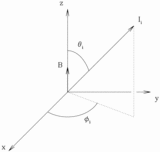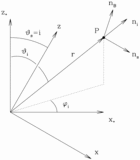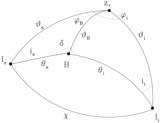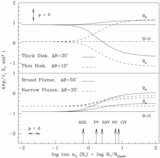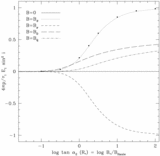Image Details
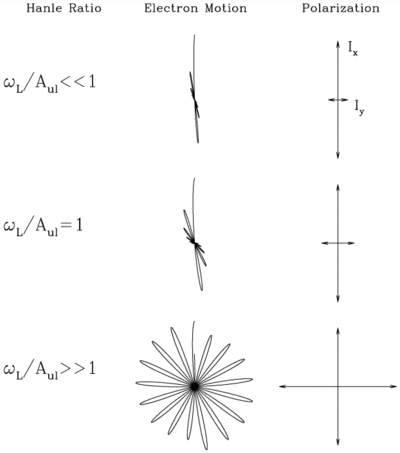
Caption: Fig. 1.
The Hanle effect as seen by an observer looking along the magnetic field. Three cases are shown for the ratio of the precession rate ωL to the radiative rate Aul. The left column gives the ratio ωL/Aul, the middle column shows the classical electron motion, and the right column schematically indicates the intensities of the scattered light in two orthogonal directions. The cases shown are for the scattering of unpolarized light that is incident from the negative y‐direction at the right with the magnetic field on the z‐axis and along the viewing line of sight. For weak fields with ωL/Aul ![]() 1, Ix
1, Ix ![]() Iy, and the scattered light is nearly 100% polarized along the x‐direction. For large fields with ωL/Aul
Iy, and the scattered light is nearly 100% polarized along the x‐direction. For large fields with ωL/Aul ![]() 1, the Hanle precession completes an entire rotation before much damping of the oscillator can occur, so the scattered light is emitted evenly at all position angles (which we call "saturated"), such that Ix ≈ Iy and the polarization drops toward zero. The middle row is for ωL/Aul = 1, which gives the optimal Hanle effect sensitivity to the magnetic field.
1, the Hanle precession completes an entire rotation before much damping of the oscillator can occur, so the scattered light is emitted evenly at all position angles (which we call "saturated"), such that Ix ≈ Iy and the polarization drops toward zero. The middle row is for ωL/Aul = 1, which gives the optimal Hanle effect sensitivity to the magnetic field.
Copyright and Terms & Conditions
© 1997. The American Astronomical Society. All rights reserved. Printed in U.S.A.


